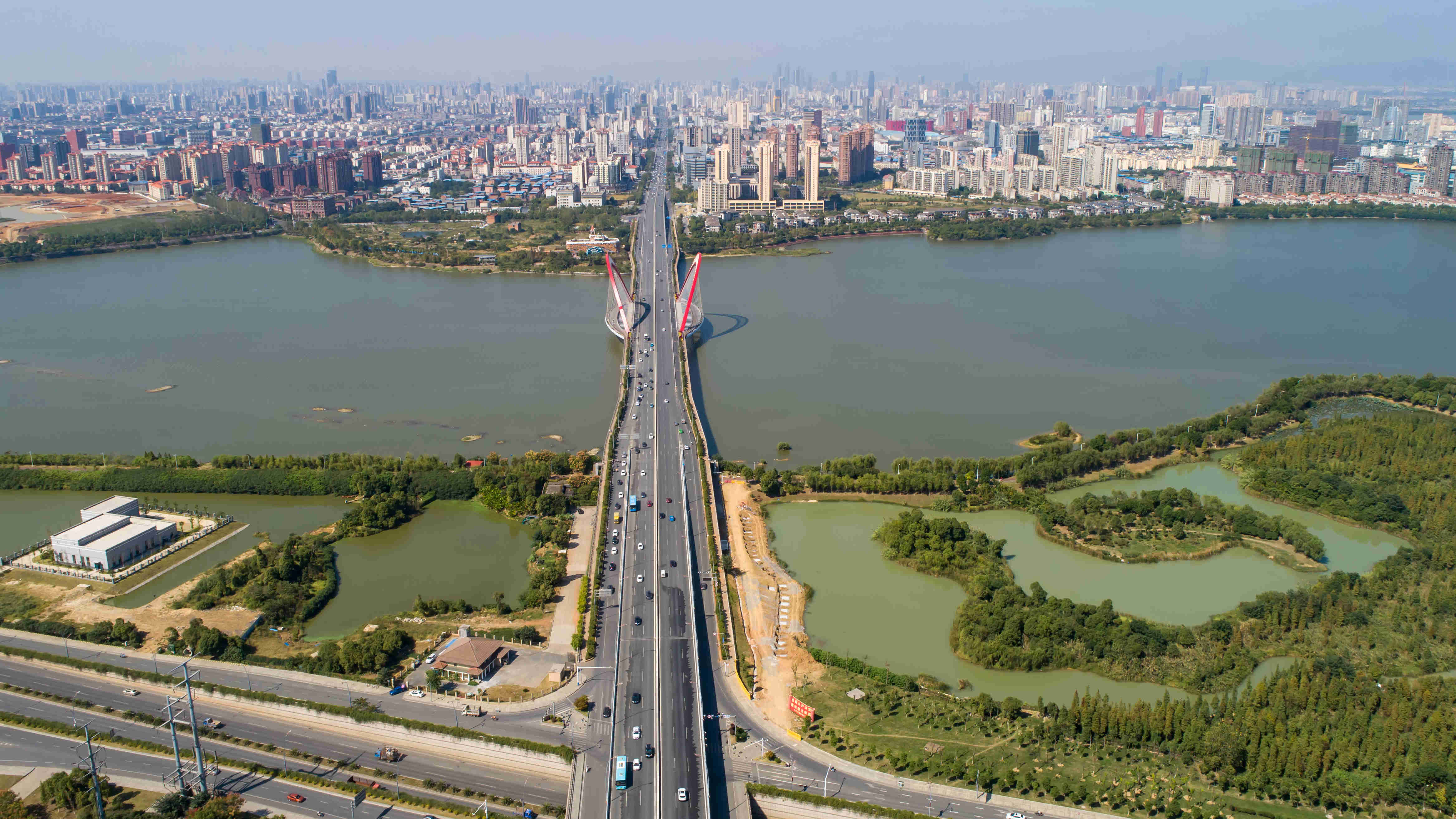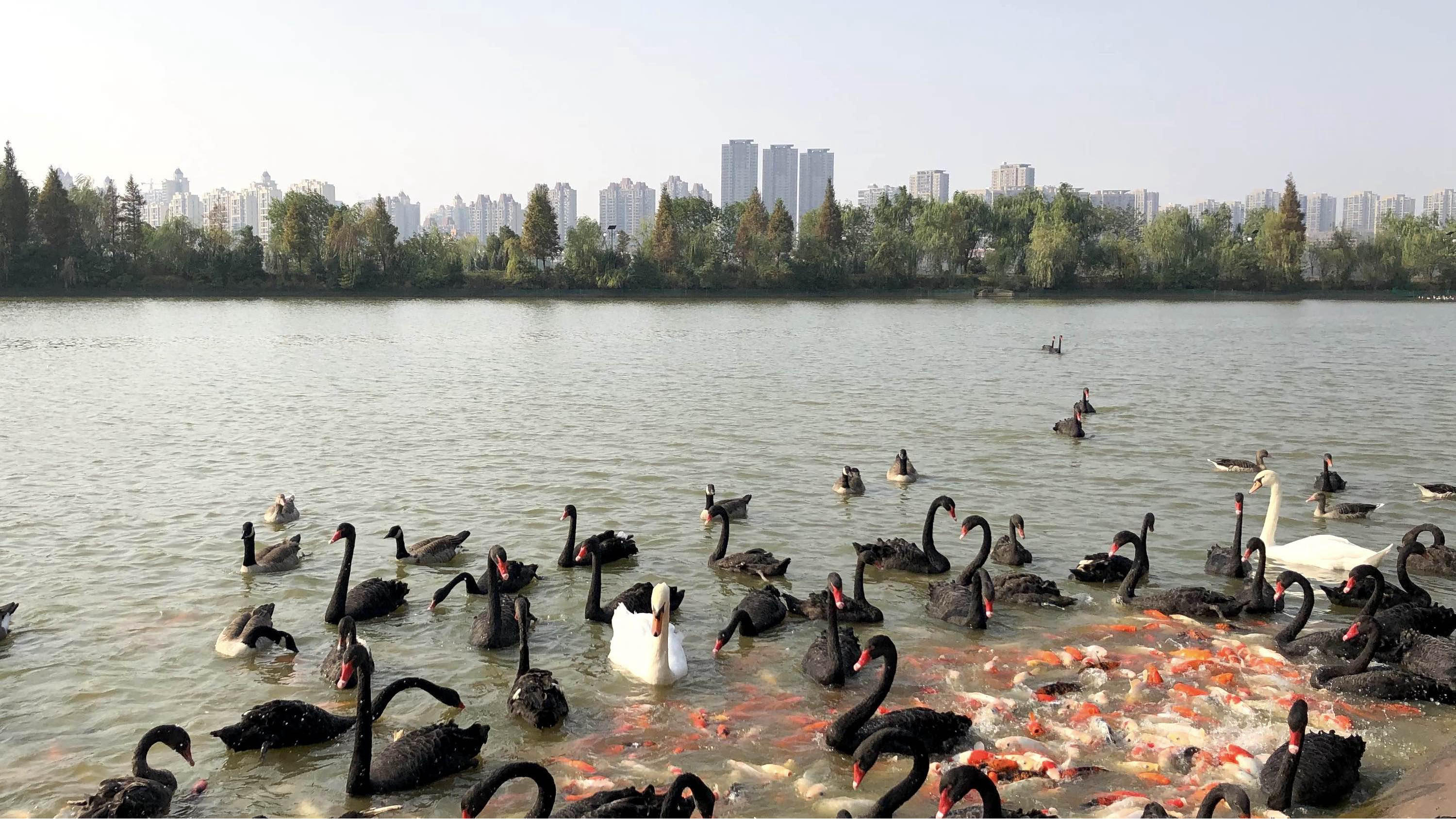
An aerial view of Aixi Lake and Aixi Lake Bridge in Nanchang, east China's Jiangxi Province. The city's downtown area is in the upper part of the picture. /VCG Photo
An aerial view of Aixi Lake and Aixi Lake Bridge in Nanchang, east China's Jiangxi Province. The city's downtown area is in the upper part of the picture. /VCG Photo
The Aixi Lake Forest Wetland Park lies in the heart of Nanchang, east China's Jiangxi Province. The 467-hectare park is home to about 2,000 birds including wild geese, egrets, and swans.
Before the park was established, Aixi Lake was surrounded by villages. The area was targeted by real estate developers because of its great commercial potential, according to Yang Funing, chief engineer of the Nanchang Forestry and Grassland Administration.
"People really want a better environment rather than more residential apartments," Yang said.
To meet the needs of different wild species, the park is divided into several mini parks, including separate areas for cranes and swans, lotus and wintersweet shrubs. To better protect the birds' habitats, those areas are isolated from human activities.

The swan lake of Aixi Lake Forest Wetland Park /VCG Photo
The swan lake of Aixi Lake Forest Wetland Park /VCG Photo
In 2004, a project was launched to build a cluster of forest cities nationwide, with the aim of improving the environment in urban areas through greening.
The forest cities are expected to help lower the average air temperature, improve air quality, create noise barriers, generate habitats for wildlife and improve biodiversity in their regions.
By the end of last year, 138 cities had been certified as State-level Forest Cities, and the forested area in each rose by 13,333 hectares per annum in the past five years.
All 11 cities in Jiangxi have been designated State-level Forest Cities, making it the only province in the country where every city has that status.
Last year, the protection of forests and wetland brought benefits equivalent to 1.5 trillion yuan, according to the provincial Forestry and Grassland Administration.

In the Tianhuajing National Forest Park, China's east Jiangxi Province, a bird pecks on the fruit of an oak tree. /VCG Photo
In the Tianhuajing National Forest Park, China's east Jiangxi Province, a bird pecks on the fruit of an oak tree. /VCG Photo
The construction of forest cities provides the younger generation with opportunities to learn about wildlife, as many cities have also built forest or nature museums for educational purposes.
In May last year, Jiujiang's first forest museum, located in the Tianhuajing National Forest Park, opened to the public. Entry is free, and the museum, which has more than 1,000 specimens endemic to the city, has attracted about 500,000 people so far.
"The purpose of building forest cities is not simply to 'green' urban areas, but also to inspire a love of nature among people, especially the younger generation," said Yu Xiankui, director of the Jiujiang forestry and grassland bureau.
(Cover photo via VCG. Edited by Li Yujun.)
(If you want to contribute and have specific expertise, please contact us at nature@cgtn.com)
Source(s): China Daily